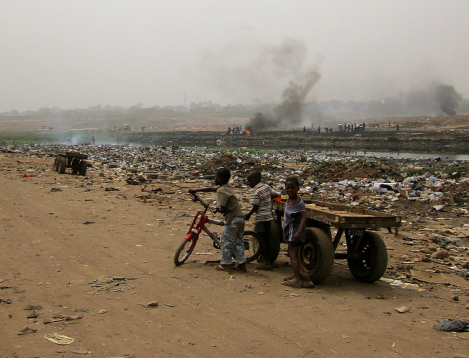If you had a detailed enough map, you could find Agbogbloshie on the banks of the Korle Lagoon, just outside of Accra, Ghana’s capital city. Its four acres contain an estimated population of 40,000 men, women and children living in shacks built from scrap metal. It is the world’s largest dumpsite for electronic waste.
Mosquitos from the lagoon spread malaria. Residents report headaches, chronic nausea, insomnia, respiratory problems, anorexia and burns. Smoke rises in black pillars across the landscape as plastic appliances are incinerated for the metals inside. Children hack at motherboards and smart phones with rocks and chisels while women wander through the burning scrap heaps selling fruit and bags of water, their infants tied to them and breathing the toxic air.
Agbogbloshie is strewn with the discarded pieces of VHS players, televisions, computers, laptops, refrigerators, microwaves and stereos, and the U.N. has predicted that this electronic waste will increase by 33 percent in the next four years. Already the soil is contaminated with cadmium, arsenic, mercury and lead. The ground is so saturated with lead that it measures 18,125 parts per million, forty-five times the United States’ safety standard.
Read the rest on Planet Experts.


Agbobloshie is not all about e-waste. It has amazing stories which are inspiring.http://bit.ly/1IDeqMz
Thanks for sharing, Adu-Darkwa! It’s great to hear something positive is happening in the area after so much attention has been paid to the negative side.